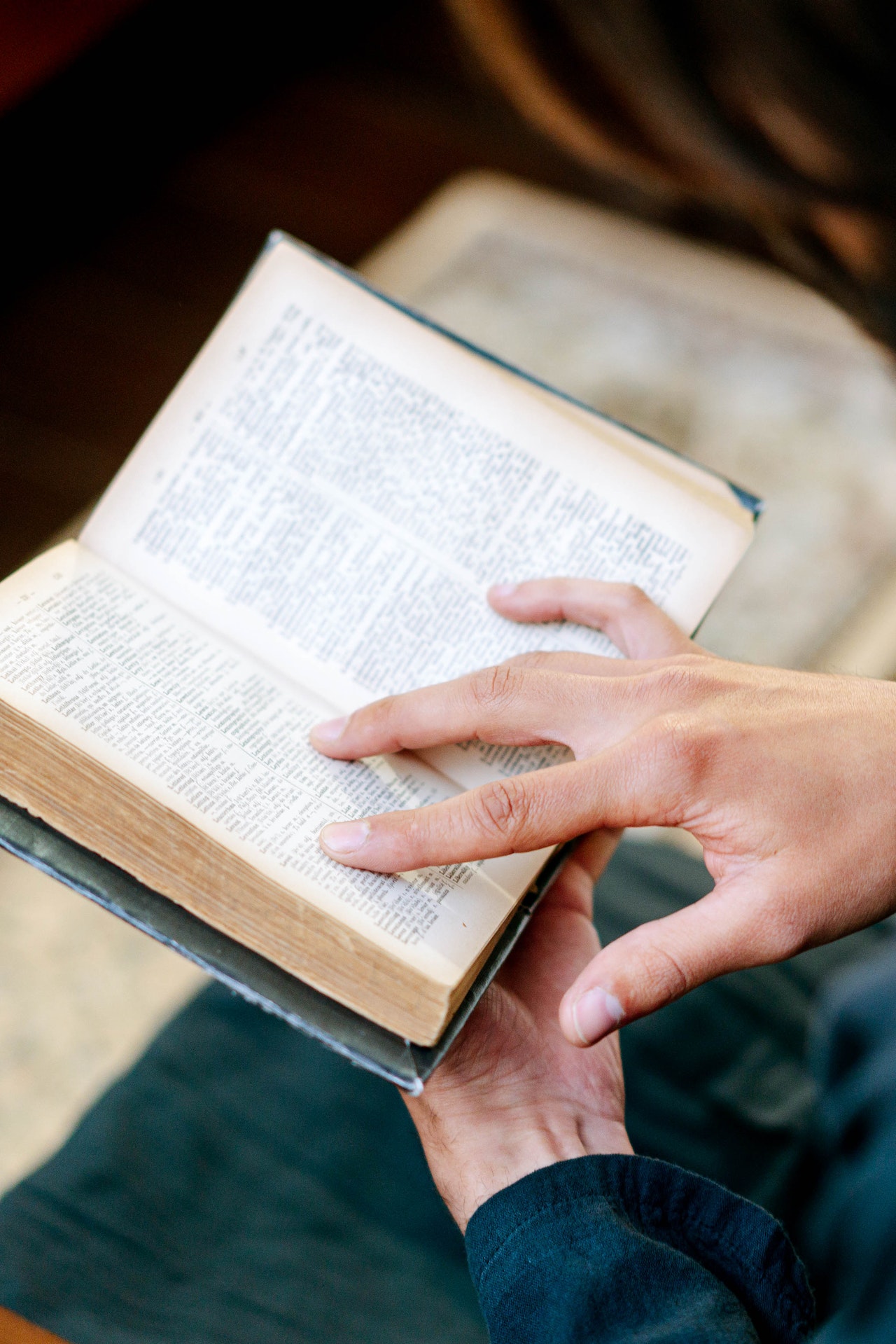Throughout history, various individuals and groups have engaged in dance as a form of worship and expression. In the context of Christianity, dance has been used by believers to honor and glorify Jesus Christ. While there is no specific individual or group exclusively designated as “dancing for Jesus,” many Christians around the world incorporate dance into their worship practices as a means of connecting with their faith and expressing their devotion to Jesus.
Table of Contents
The Significance of Dance in Christian Worship
Who danced for Jesus?
When we think of Christian worship, we often picture a solemn gathering of people singing hymns and listening to a sermon. But did you know that dance has played a significant role in Christian worship throughout history? That’s right, dancing for Jesus is not a new concept.
Dance has always been a powerful form of expression, and it is no different in the context of worship. In fact, dance has been used as a way to connect with God and express devotion for centuries. From the early days of Christianity to modern times, dance has been a way for believers to physically demonstrate their love for God.
In the Bible, we see numerous examples of dance being used in worship. One of the most well-known instances is found in the book of Psalms, where it says, “Let them praise his name with dancing” (Psalm 149:3). This verse shows us that dancing is a legitimate form of worship and a way to honor God.
Throughout history, different cultures and denominations have embraced dance as a part of their worship practices. In some African and Latin American churches, for example, dance is an integral part of the worship experience. The rhythmic movements and vibrant colors create an atmosphere of joy and celebration.
But dance is not limited to these cultures alone. Even in more traditional churches, you may find people swaying or clapping their hands to the music. These subtle movements are a form of dance, a way for individuals to physically engage with the music and express their worship.
So why is dance so significant in Christian worship? One reason is that it allows believers to engage their whole being in worship. When we dance, we are not just using our voices or our minds, but our bodies as well. It is a holistic expression of our love for God.
Dance also has the power to unite people. When a congregation dances together, they are not just individuals worshiping in their own way, but a community coming together in harmony. It creates a sense of unity and belonging, reminding us that we are all part of the body of Christ.
Furthermore, dance can be a form of prayer. When we dance, we are not just moving our bodies, but we are also communicating with God. It is a way to express our deepest desires and emotions, to pour out our hearts before Him. In this sense, dance becomes a form of worship that goes beyond words.
Of course, not everyone feels comfortable dancing in a worship setting, and that’s okay. Worship is a personal experience, and each person expresses their love for God in their own unique way. Some may prefer to sing, while others may choose to pray silently. The important thing is that we are sincere in our worship and that our hearts are focused on God.
So the next time you find yourself in a worship service and the music moves you, don’t be afraid to let your body respond. Whether it’s a simple sway or a full-on dance, remember that you are joining a long line of believers who have danced for Jesus throughout history. Let your body become an instrument of worship, and let your dance be a reflection of your love for God.
Exploring the Role of Dance in Biblical Narratives
Who danced for Jesus?
When we think of dance, we often associate it with joy, celebration, and self-expression. But did you know that dance also plays a significant role in biblical narratives? In this article, we will explore the various instances where dance is mentioned in the Bible and the significance it holds in these stories.
One of the most well-known instances of dance in the Bible is found in the book of Exodus. After the Israelites successfully crossed the Red Sea, Moses and the people of Israel broke into a spontaneous dance of celebration. Miriam, Moses’ sister, took a tambourine in her hand, and all the women followed her, dancing and singing praises to God. This dance symbolized their freedom from slavery and their gratitude towards God for delivering them from the hands of the Egyptians.
Another notable mention of dance in the Bible is found in the book of 2 Samuel. King David, known for his musical talents, danced before the Lord with all his might when the Ark of the Covenant was brought back to Jerusalem. David’s dance was a display of his deep reverence and joy for God’s presence among his people. However, not everyone was pleased with David’s exuberant dance. His wife, Michal, criticized him for his undignified behavior, but David defended himself, stating that he was dancing for the Lord and not for the approval of others.
In the New Testament, dance is also mentioned in the parable of the prodigal son. When the wayward son returns home, his father throws a grand celebration. In this celebration, there is music and dancing, symbolizing the joy and restoration that comes with repentance and forgiveness. The dance in this parable represents the joy of reconciliation and the father’s unconditional love for his son.
Dance in biblical narratives serves as a powerful expression of worship, celebration, and gratitude. It is a way for individuals to connect with God on a deeper level and express their emotions and devotion. Dance allows people to use their bodies as instruments of praise, offering their whole selves to God.
In addition to its spiritual significance, dance also has cultural and social implications in biblical times. In many ancient cultures, dance was an integral part of religious rituals and ceremonies. It was a way for communities to come together, celebrate, and express their shared beliefs and values. Dance was also used to commemorate important events and milestones, such as victories in battle or the harvest season.
While dance is not explicitly commanded or prohibited in the Bible, it is clear that it holds a special place in the hearts of believers. It is a form of expression that allows individuals to connect with God and their community in a unique and powerful way. Whether it is a spontaneous dance of celebration, a display of reverence, or an expression of joy and reconciliation, dance has the ability to touch the hearts and souls of those who participate in it.
So, the next time you find yourself moved by a song or overwhelmed with gratitude, why not let your body join in the dance? Dance like Miriam, David, and the prodigal son, and let your movements become a testament to your love for God and your desire to worship Him with all your being. Dance for Jesus, and let your heart soar with joy and praise.
How Dance Can Be a Form of Worship and Expression for Christians
Have you ever wondered how dance can be a form of worship and expression for Christians? Well, you’re not alone! Many people are curious about this topic and are eager to learn more. In this article, we will explore the idea of dance as a way to connect with God and express one’s faith.
Dance has been a part of human culture for centuries. It is a universal language that transcends words and allows individuals to communicate their emotions and experiences. For Christians, dance can be a powerful tool to express their love and devotion to God.
In the Bible, we find numerous references to dance as a form of worship. In the book of Psalms, King David, known for his passionate worship, danced before the Lord with all his might. He didn’t hold back or worry about what others might think. Instead, he let his body move freely, expressing his joy and gratitude to God.
Similarly, in the New Testament, we read about the story of the prodigal son. When the son returned home after squandering his inheritance, his father threw a grand celebration. And what was a central part of this celebration? Dance! The father instructed his servants to bring out the best robe and put a ring on his son’s finger. Then, he said, “Let us eat and celebrate, for this son of mine was dead and is alive again; he was lost and is found.” The joy and excitement were so overwhelming that dancing became a natural expression of their happiness.
But dance is not just about expressing joy and celebration. It can also be a way to connect with God on a deeper level. When we dance, we engage our bodies, minds, and spirits in a holistic way. It becomes a form of prayer, where we surrender ourselves to God and allow Him to move through us.
In many Christian traditions, dance is incorporated into worship services. Whether it’s through liturgical dance, where dancers perform choreographed movements that reflect the meaning of a song or scripture, or spontaneous dance, where individuals are encouraged to let go and move as the Spirit leads, dance adds a unique dimension to the worship experience.
Dance can also be a form of personal expression for Christians. Just as each person has a unique voice, each person has a unique way of moving. When we dance, we are able to express our individuality and offer our unique gifts to God. It is a way to show Him who we are and how we experience His presence in our lives.
Furthermore, dance can be a powerful tool for healing and restoration. It allows individuals to release pent-up emotions, find solace in God’s presence, and experience a sense of freedom. In times of pain or struggle, dance can be a source of comfort and strength, reminding us that we are not alone and that God is with us every step of the way.
In conclusion, dance can be a beautiful and meaningful form of worship and expression for Christians. It allows us to connect with God, express our faith, and experience His presence in a tangible way. Whether it’s through joyful celebration or deep prayer, dance has the power to transform our worship and draw us closer to the heart of God. So, the next time you see someone dancing in church or feel the urge to move your body during worship, remember that you are joining a long line of believers who have danced for Jesus throughout history.
The Historical and Cultural Context of Dance in Jesus’ Time
Who danced for Jesus?
In order to understand who danced for Jesus, it is important to delve into the historical and cultural context of dance during his time. Dance played a significant role in the lives of people in ancient Israel, and it was often used as a form of expression, celebration, and worship.
During Jesus’ time, dance was a common practice among the Jewish people. It was not only a form of entertainment but also a way to express joy and gratitude. Dance was often performed during festive occasions such as weddings, religious festivals, and other celebrations. It was a way for people to come together and rejoice in the blessings of life.
One of the most well-known instances of dance in the Bible is the story of King David dancing before the Ark of the Covenant. According to the Book of Samuel, David danced with all his might, wearing a linen ephod, as the Ark was brought into Jerusalem. This act of dance was seen as an expression of David’s deep reverence and joy in the presence of God.
In addition to David, there were other instances in the Bible where dance was mentioned. For example, in the Book of Exodus, after the Israelites crossed the Red Sea, Miriam, the sister of Moses, led the women in a dance of celebration. This dance was a way for the women to express their gratitude and joy for their deliverance from slavery.
Dance was not only a part of religious and celebratory events but also had a role in the worship practices of the Jewish people. The Psalms, which are a collection of songs and prayers, often mention dance as a form of worship. Psalm 149:3 says, “Let them praise his name with dancing and make music to him with timbrel and harp.” This verse suggests that dance was seen as a way to honor and praise God.
It is important to note that dance in ancient Israel was not limited to a specific gender or age group. Both men and women, young and old, participated in dance. It was a communal activity that brought people together, regardless of their social status or background.
In the context of Jesus’ ministry, there is no specific mention of him dancing. However, it is likely that he would have been familiar with and participated in the cultural practices of his time. Jesus was known to attend weddings and other festive gatherings, where dance was a common form of expression. It is possible that he witnessed and even joined in the dancing during these occasions.
In conclusion, dance played a significant role in the historical and cultural context of Jesus’ time. It was a form of expression, celebration, and worship that brought people together. While there is no specific mention of Jesus dancing in the Bible, it is likely that he would have been familiar with and participated in the cultural practices of his time. Dance was a way for people to connect with one another and express their joy and gratitude, and it is possible that Jesus himself danced on various occasions.
Conclusion
There is no conclusive evidence or historical record that specifically identifies who danced for Jesus.



